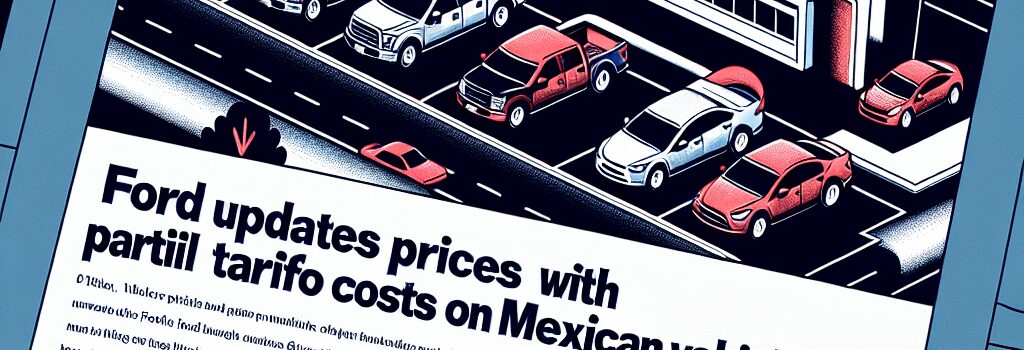Ford Updates Prices with Partial Tariff Costs for Mexican Vehicles

Mid-Year Pricing Adjustments Amid Trade Tariffs
Ford Motor Company is implementing selective price increases on several of its Mexican-manufactured models this summer in response to the new 25 percent auto tariff imposed on imported vehicles. A memo obtained by Reuters and shared with dealers confirms that the Mustang Mach-E electric crossover, Bronco Sport compact SUV, and Maverick compact pickup will each see sticker prices rise by up to $2,000 for units imported after May 2, 2025. Ford has clarified that existing inventory will remain at current prices.
Technical Specifications and Cost Pass-Through Analysis
- Mustang Mach-E: Equipped with a 91 kWh lithium-ion battery pack and dual permanent-magnet motors, this EV’s production cost is estimated at $10,000–$12,000 per unit. The 25 percent tariff equates to roughly $2,500 on a $50,000 base-model Mach-E.
- Bronco Sport: Powered by the 1.5 L EcoBoost three-cylinder (181 hp, 190 lb-ft), the small SUV carries an MSRP of $29,995. A full pass-through of the tariff would add $7,500, but Ford’s $1,500–$2,000 bump covers only a fraction of that increment.
- Maverick Hybrid: Featuring a 2.5 L Atkinson-cycle hybrid system (191 hp combined) mated to a continuously variable transmission (CVT), the Maverick’s base price of $23,600 faces a potential $5,900 tariff impact—of which only ~$1,800 is applied.
Ford has stated that these adjustments are part of its regular mid-year pricing and do not completely offset the tariff costs. The company estimates the 25 percent U.S.-Mexico auto tariff will reduce its 2025 earnings by up to $1.5 billion.
Supply Chain Implications and Manufacturing Footprint
Units for the Mach-E and Bronco Sport are sourced primarily from Ford’s Hermosillo, Sonora, and Cuautitlán, Estado de México, plants, which collectively employ over 20,000 workers. With a tariff on both complete vehicles and a separate 25 percent levy on imported components now in force, Ford and its Tier 1 suppliers face increased duty burdens on stamped body panels, electronics modules, and powertrain assemblies. Although USMCA rules of origin could mitigate some duties, Ford’s supply chain heavily relies on cross-border just-in-time shipments that predate the new tariffs. According to industry analyst Sarah Wang at LMC Automotive, “The dual tariff on vehicles and parts disrupts lean manufacturing flows and may force OEMs to re-evaluate near-shoring strategies.”
Impact on EV and Hybrid Adoption
Price sensitivity in the rapidly growing EV segment could be exacerbated by these increases. The Mach-E has delivered monthly unit growth of 10 percent year-over-year, but Consumer Price Index data suggests buyers are sensitive to even modest MSRP hikes. Ford continues to offer employee pricing through July 4 on all post-May 2 models to partially blunt the impact. However, higher sticker prices may push some customers toward competing EVs assembled within the U.S. or eligible for stronger federal tax credits under the Inflation Reduction Act.
Market Forecast and Consumer Response
J.D. Power forecasts that retail deliveries of small SUVs and light-duty trucks will grow by 3.8 percent in 2025, tapering off in the second half as affordability pressures mount. In a recent survey, 42 percent of prospective buyers said tariffs influenced their brand choice, with some shifting from imported to domestically produced models. Ford’s CFO John Lawler commented in the Q1 earnings call, “We’re managing margin compression through operational efficiencies, but we’re mindful of consumer demand elasticity in a highly competitive segment.”